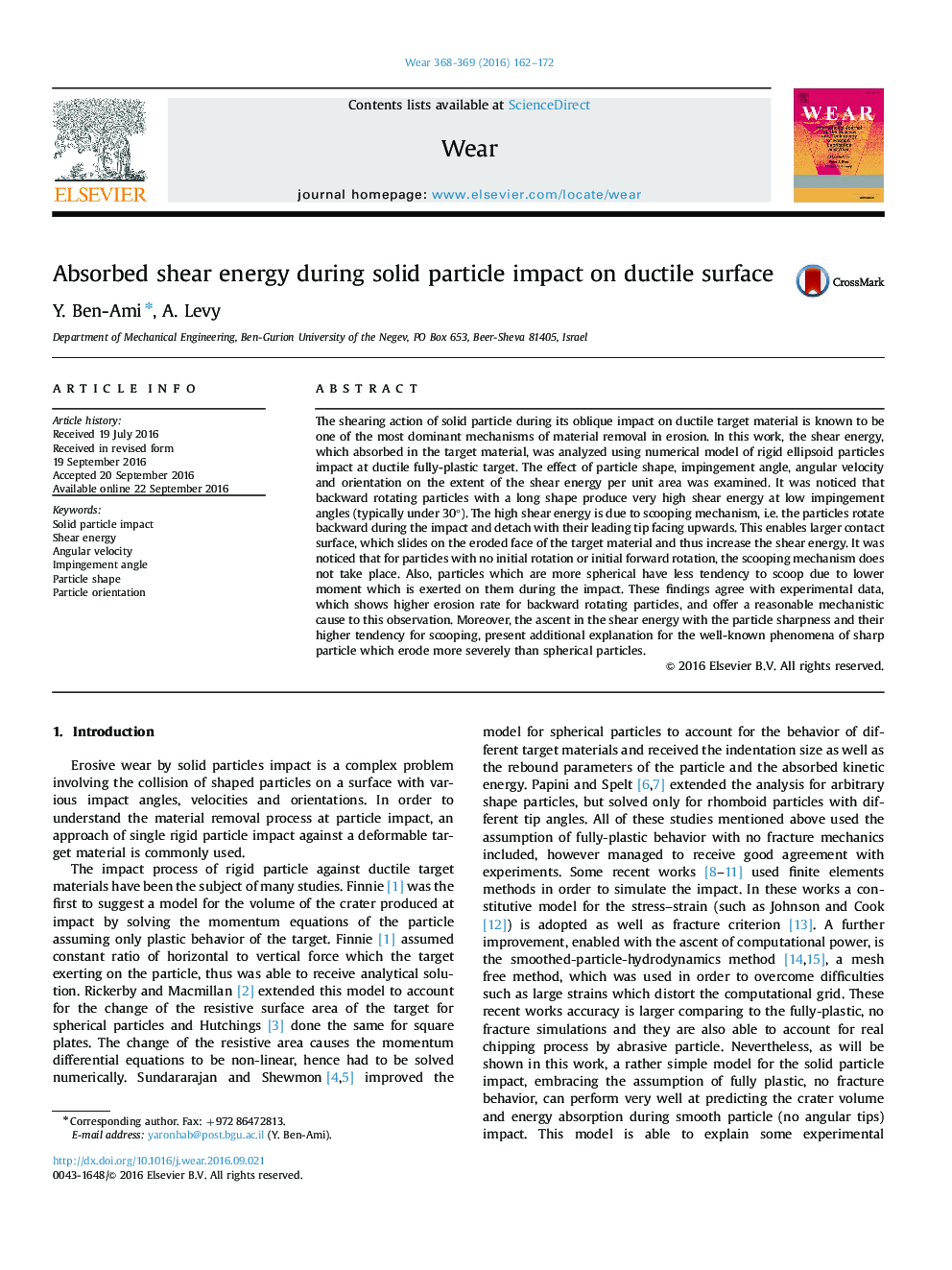| کد مقاله | کد نشریه | سال انتشار | مقاله انگلیسی | نسخه تمام متن |
|---|---|---|---|---|
| 4986893 | 1454957 | 2016 | 11 صفحه PDF | دانلود رایگان |
عنوان انگلیسی مقاله ISI
Absorbed shear energy during solid particle impact on ductile surface
ترجمه فارسی عنوان
انرژی برشی در طول ذرات جامد بر سطح ورقه جذب می شود
دانلود مقاله + سفارش ترجمه
دانلود مقاله ISI انگلیسی
رایگان برای ایرانیان
کلمات کلیدی
تاثیر ذرات جامد، انرژی برشی، سرعت زاویهای، زاویه تسمه شکل ذرات، جهت گیری ذرات،
موضوعات مرتبط
مهندسی و علوم پایه
مهندسی شیمی
شیمی کلوئیدی و سطحی
چکیده انگلیسی
The shearing action of solid particle during its oblique impact on ductile target material is known to be one of the most dominant mechanisms of material removal in erosion. In this work, the shear energy, which absorbed in the target material, was analyzed using numerical model of rigid ellipsoid particles impact at ductile fully-plastic target. The effect of particle shape, impingement angle, angular velocity and orientation on the extent of the shear energy per unit area was examined. It was noticed that backward rotating particles with a long shape produce very high shear energy at low impingement angles (typically under 30°). The high shear energy is due to scooping mechanism, i.e. the particles rotate backward during the impact and detach with their leading tip facing upwards. This enables larger contact surface, which slides on the eroded face of the target material and thus increase the shear energy. It was noticed that for particles with no initial rotation or initial forward rotation, the scooping mechanism does not take place. Also, particles which are more spherical have less tendency to scoop due to lower moment which is exerted on them during the impact. These findings agree with experimental data, which shows higher erosion rate for backward rotating particles, and offer a reasonable mechanistic cause to this observation. Moreover, the ascent in the shear energy with the particle sharpness and their higher tendency for scooping, present additional explanation for the well-known phenomena of sharp particle which erode more severely than spherical particles.
ناشر
Database: Elsevier - ScienceDirect (ساینس دایرکت)
Journal: Wear - Volumes 368â369, 15 December 2016, Pages 162-172
Journal: Wear - Volumes 368â369, 15 December 2016, Pages 162-172
نویسندگان
Y. Ben-Ami, A. Levy,
